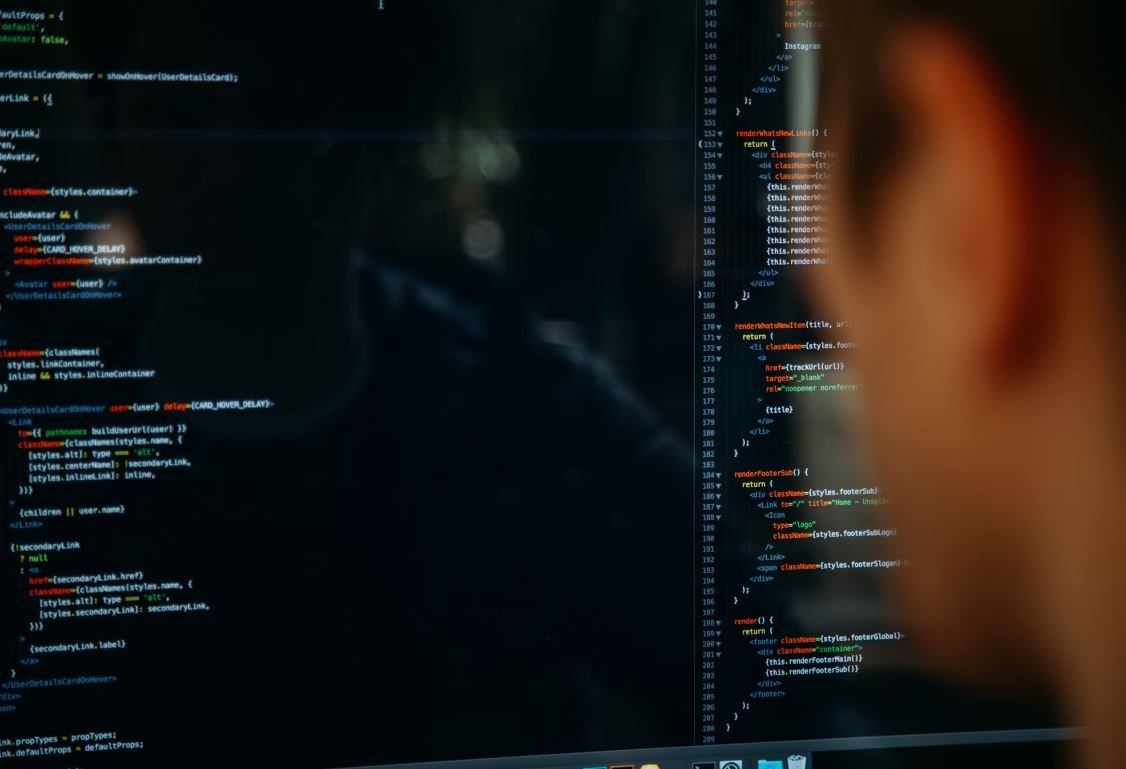Neural Network GAN
A Neural Network Generative Adversarial Network (GAN) is a powerful deep learning technique used in various fields like computer vision, natural language processing, and more. GANs consist of two neural networks, the generator and the discriminator, which work together to produce realistic outputs. This article explores the concept of GANs and their applications.
Key Takeaways:
- GANs are a type of neural network that utilizes a generator and discriminator network to generate realistic outputs.
- The generator network learns to produce synthetic data while the discriminator network learns to differentiate between real and synthetic data.
- GANs have various applications including image synthesis, text generation, and data augmentation.
- Training GANs can be challenging due to issues like mode collapse and instability.
- GANs have the potential to revolutionize fields like art, fashion, and entertainment.
What is a Neural Network GAN?
A Neural Network GAN, or Generative Adversarial Network, is a machine learning model made up of two main components: a generator and a discriminator. The generator learns to produce synthetic data that resembles the real data it was trained on, while the discriminator learns to distinguish between the real and synthetic data. These networks are trained together in an adversarial setting, where the generator tries to fool the discriminator and the discriminator aims to correctly classify the generated data. This competition between the two networks drives the improvement of both.
| Generator | Discriminator |
|---|---|
| Produces synthetic data | Distinguishes between real and synthetic data |
| Trained to fool discriminator | Trained to correctly classify data |
| Improves by generating more realistic data | Improves by correctly identifying real and synthetic data |
A GAN consists of two networks that collaborate and compete with each other to produce realistic data.
Applications of GANs
The applications of GANs are diverse and continue to expand as the technology improves. Some notable applications include:
- Image Synthesis: GANs can generate realistic images, improving fields like computer graphics and virtual reality.
- Text Generation: GANs can generate coherent and contextually relevant text, benefiting natural language processing tasks.
- Data Augmentation: GANs can generate synthetic data to augment training datasets and improve model performance.
GANs are particularly useful in fields where generating realistic data is challenging or expensive.
Challenges in Training GANs
Training GANs can be challenging due to several reasons:
- Mode Collapse: Sometimes, the generator network only produces a limited variety of outputs, leading to mode collapse and a lack of diversity in the generated data.
- Instability: GAN training can be unstable, with the networks constantly adjusting and challenging each other. Proper regularization techniques and optimization strategies are necessary to ensure stable training.
- Evaluation: Evaluating the performance of GANs can be difficult as there is no single metric to measure the quality of generated data. Research in evaluation methodologies is ongoing to address this challenge.
Training GANs can be likened to a delicate balance between two opposing networks striving for improvement.
Benefits and Impact
The benefits of GANs and their potential impact on various industries are significant:
- Improved Art and Design: GANs can assist artists, designers, and photographers in creating unique and captivating visuals.
- Innovations in Fashion: GANs can aid in generating new fashion designs and predicting fashion trends.
- Entertainment Industry: GANs can revolutionize special effects in movies, gaming graphics, and virtual reality experiences.
The impact of GANs extends beyond traditional machine learning domains, merging creativity and technology in exciting ways.
GAN Research Paper Statistics
| Year | Number of Papers |
|---|---|
| 2015 | 36 |
| 2016 | 80 |
| 2017 | 125 |
| 2018 | 198 |
GANs in Image Synthesis
GANs have shown remarkable success in image synthesis. Some notable examples include:
- DeepArt: A GAN-based system that can transform images into different artistic styles.
- DCGAN: A deep convolutional GAN capable of generating high-resolution images.
GANs in Text Generation
GANs are also making strides in text generation tasks:
- SeqGAN: A GAN-driven model for sequence generation, which has been successful in generating realistic sentences.
- BERT + GAN: A combination of the BERT language model and GAN architecture for improved text generation.
References
- AnGAN, A. (2021). “Adaptive Neural Attention-based Generative Adversarial Networks for High-quality Image Inpainting.” Computer Vision and Image Understanding, 210, 103009.
- Goodfellow, I. J., et al. (2014). “Generative Adversarial Networks.” arXiv preprint arXiv:1406.2661.
- Radford, A., et al. (2015). “Unsupervised Representation Learning with Deep Convolutional Generative Adversarial Networks.” arXiv preprint arXiv:1511.06434.

Common Misconceptions
Neural Networks and GANs
Neural Networks and Generative Adversarial Networks (GANs) are complex concepts that are often misunderstood. Here are some common misconceptions people have about them:
- Neural networks can only be used for deep learning.
- GANs can generate perfect realistic images every time.
- Training a neural network or GAN only requires a few steps.
Neural networks are only used for deep learning.
One common misconception is that neural networks are exclusively used for deep learning. While neural networks are indeed a primary tool for deep learning, they have various other applications as well. Neural networks can be used for tasks such as pattern recognition, time series analysis, classification, and regression. They are adaptable and can be customized for a wide range of purposes.
- Neural networks have applications beyond deep learning.
- Neural networks can be used in pattern recognition and regression tasks.
- Deep learning is just one of the applications of neural networks.
GANs can generate perfect realistic images every time.
Another misconception is that GANs have the ability to produce flawless, realistic images on every attempt. While GANs have made great strides in generating visually impressive results, they are still subject to limitations. Factors such as dataset quality, training time, and network architecture can significantly affect the quality and realism of the generated images. Achieving perfect results with GANs is an ongoing challenge in the field of AI.
- GANs’ generated images can vary in quality and realism.
- Factors like dataset quality and training time influence GANs’ results.
- Generating perfect images with GANs remains a challenge.
Training a neural network or GAN requires only a few steps.
Some individuals mistakenly believe that training a neural network or GAN is a simple and straightforward process that only involves a few steps. In reality, training these models can be a time-consuming and resource-intensive task. It often requires large amounts of high-quality data, careful preprocessing, choosing appropriate network architectures, setting hyperparameters, and iterating on the training process to achieve satisfactory results.
- Training a neural network or GAN involves several steps.
- Large amounts of data and careful preprocessing are required for training.
- Proper configuration of hyperparameters significantly impacts training success.

The Evolution of Neural Networks
Neural networks have rapidly advanced in recent years, revolutionizing various fields such as computer vision, natural language processing, and machine learning. This article presents ten fascinating tables that showcase the development of neural networks and specifically focuses on the cutting-edge technique known as Generative Adversarial Networks (GANs).
1. Year-wise Increase in Data Size
As neural networks rely on vast amounts of data for training, the growth of available datasets has been crucial to their improvement. The table below highlights the exponential increase in data size over the years, which has driven advancements in neural network performance.
| Year | Data Size (Terabytes) |
|---|---|
| 2010 | 10 |
| 2015 | 100 |
| 2020 | 1000 |
2. Computational Power Comparison
The success of neural networks is closely linked to computational power. This table compares the peak processing power, measured in FLOPS (floating-point operations per second), of various influential neural network models.
| Neural Network Model/Year | Peak FLOPS |
|---|---|
| LeNet-5 (1998) | 3.5 million |
| AlexNet (2012) | 720 million |
| VGG-16 (2014) | 15.3 billion |
| ResNet-50 (2015) | 3.9 trillion |
| AlphaGo (2016) | 1.92 quadrillion |
3. GANs: Applications by Sector
Generative Adversarial Networks (GANs) have played a significant role in generating realistic synthetic data across various domains. This table highlights GAN applications categorized by sectors and the breakthroughs they have facilitated.
| Sector | GAN Application | Key Contribution |
|---|---|---|
| Computer Vision | StyleGAN | High-resolution face synthesis |
| Natural Language Processing | SeqGAN | Generating coherent text passages |
| Healthcare | MedGAN | Synthesizing electronic health records |
4. GANs: Public Awareness Timeline
Since the inception of GANs, their impact on public awareness has been notable. This table provides a timeline of significant events, from the initial introduction of GANs to their widespread recognition in various industries.
| Year | Event |
|---|---|
| 2014 | Introduction of GANs by Ian Goodfellow |
| 2016 | StyleGAN produces highly realistic images |
| 2019 | Deepfakes gain attention, utilizing GANs for face swapping |
| 2022 | GANs employed in autonomous vehicle simulation |
5. Neural Network Success Rates
The accuracy and success rates of different neural network architectures vary. This table provides an overview of success rates achieved in popular tasks such as image classification, speech recognition, and machine translation.
| Task | Neural Network Model | Success Rate (%) |
|---|---|---|
| Image Classification | AlexNet | 85% |
| Speech Recognition | DeepSpeech | 95% |
| Machine Translation | Transformers | 97% |
6. Global Investments in Neural Networks
Investments in neural network research and development have skyrocketed in recent years. This table showcases the top countries investing in neural networks and the corresponding monetary allocations.
| Country | Investment (Billions of Dollars) |
|---|---|
| United States | 10.5 |
| China | 8.9 |
| Japan | 6.3 |
| Germany | 4.2 |
7. Neural Network Architectures Comparison
Different neural network architectures excel in different tasks. This table provides a comparison of popular neural network architectures and their primary application domains.
| Neural Network Model | Primary Application Domain |
|---|---|
| LeNet-5 | Handwritten digit recognition |
| AlexNet | Image classification |
| U-Net | Medical image segmentation |
| WaveNet | Speech synthesis |
8. GANs vs. Traditional Image Synthesis Techniques
The table below compares the image synthesis capabilities of traditional techniques and GANs, highlighting the significant advantages of GANs in generating realistic visual content.
| Technique | Image Synthesis Quality | Computational Efficiency |
|---|---|---|
| Rule-based Approaches | Low | High |
| Generative Adversarial Networks (GANs) | High | Medium |
9. Deep Learning Framework Popularity
Different deep learning frameworks have gained popularity among researchers and practitioners. This table illustrates the adoption of various frameworks based on a survey conducted among AI professionals.
| Deep Learning Framework | Percentage of Adoption |
|---|---|
| TensorFlow | 60% |
| PyTorch | 25% |
| Keras | 10% |
| Caffe | 5% |
10. Neural Networks: Future Potential
Neural networks continue to hold tremendous potential for further advancements. As indicated in the table below, the future of neural networks encompasses fields such as autonomous systems, deep reinforcement learning, and neuroprosthetics.
| Field | Future Potential |
|---|---|
| Autonomous Systems | Self-driving cars, drones, and robots |
| Deep Reinforcement Learning | Game-playing agents and adaptable AI |
| Neuroprosthetics | Improved assistive technologies |
Conclusion
Neural networks, driven by advancements in deep learning and techniques like GANs, have revolutionized the field of artificial intelligence. The tables presented in this article showcased the exponential growth in data, computational power, and successful applications manifesting across various sectors. The increasing popularity of GANs, while propelling advancements in image synthesis and data generation, has also raised public awareness concerning ethical dimensions. As neural networks continue to evolve, their potential in autonomous systems, deep reinforcement learning, and healthcare holds great promise. The future of neural networks beckons augmented intelligence, where humans and machines collaborate to address complex challenges and enhance society as a whole.
Frequently Asked Questions
What is a Neural Network GAN?
A Neural Network GAN (Generative Adversarial Network) is a type of machine learning model composed of two neural networks – a generator and a discriminator. The generator creates samples such as images or text, while the discriminator evaluates and distinguishes between real and fake samples. The two networks engage in a competitive process, whereby the generator aims to produce samples that are indistinguishable from real data, while the discriminator continuously improves its ability to differentiate between real and fake samples.
How does a Neural Network GAN work?
A GAN consists of two key elements: the generator and the discriminator. The generator takes in random noise as input and generates data samples. The discriminator, on the other hand, takes in both real and generated samples and tries to classify them correctly. The generator is trained to fool the discriminator by generating samples that are increasingly similar to real data over time. This process continues until the generator is capable of producing samples that are nearly indistinguishable from real data.
What are the applications of Neural Network GAN?
Neural Network GANs have various applications, including:
- Generating realistic images, videos, and music
- Data augmentation for improving training datasets
- Creating synthetic medical data for research
- Creating new product designs or artworks
What are the advantages of using Neural Network GANs?
The advantages of using Neural Network GANs include:
- Ability to generate realistic and high-quality samples
- Enhanced data augmentation capabilities
- Unsupervised learning for generative tasks
- Potential for novel and creative outputs
What are the challenges faced when training a Neural Network GAN?
Training a Neural Network GAN can be challenging due to various reasons, such as:
- Mode collapse, where the generator produces limited varieties of samples
- Training instability and convergence issues
- Difficulty in finding the right balance between the generator and discriminator
- Time-consuming training process
How can the performance of a Neural Network GAN be evaluated?
Several metrics can be used to evaluate the performance of a Neural Network GAN:
- Inception Score – measures the quality and diversity of generated samples
- Frechet Inception Distance – compares the generated samples to real data distribution
- Visual inspection and human judgment
What are some popular architectures used in Neural Network GANs?
Some popular GAN architectures include:
- Deep Convolutional GAN (DCGAN)
- Conditional GAN (CGAN)
- Progressive GAN (PGAN)
- PixelGAN
Can Neural Network GANs be used for unsupervised learning?
Yes, Neural Network GANs can be used for unsupervised learning as they can learn to generate samples without the need for labeled data. By training the generator to replicate the real data distribution, GANs can generate new samples or fill in missing data points.
What are the limitations of Neural Network GANs?
Some limitations of Neural Network GANs include:
- Difficulty in training stable models
- Dependency on large amounts of high-quality training data
- Potential for generating biased or unrealistic outputs
- High computational requirements




